With their bright pink feathers, long stick legs, and S-shaped necks, flamingos are instantly recognizable. Social animals, these birds live in flocks that may contain just a pair of birds or thousands. Flamingos get their name from the Portuguese or Spanish word Flamengo, which means “flame.”
Often found in zoos thanks to their vibrant colors, humans have been fascinated by the crimson wading bird for thousands of years. Cave paintings of flamingos have been discovered in Spain, which dates back to 5000 B.C.
But are flamingos born with that gorgeous plumage, or does it develop later on? Read on to find out all about flamingos and how they end up with those brightly colored feathers.
Where Can You See Flamingos in the Wild?
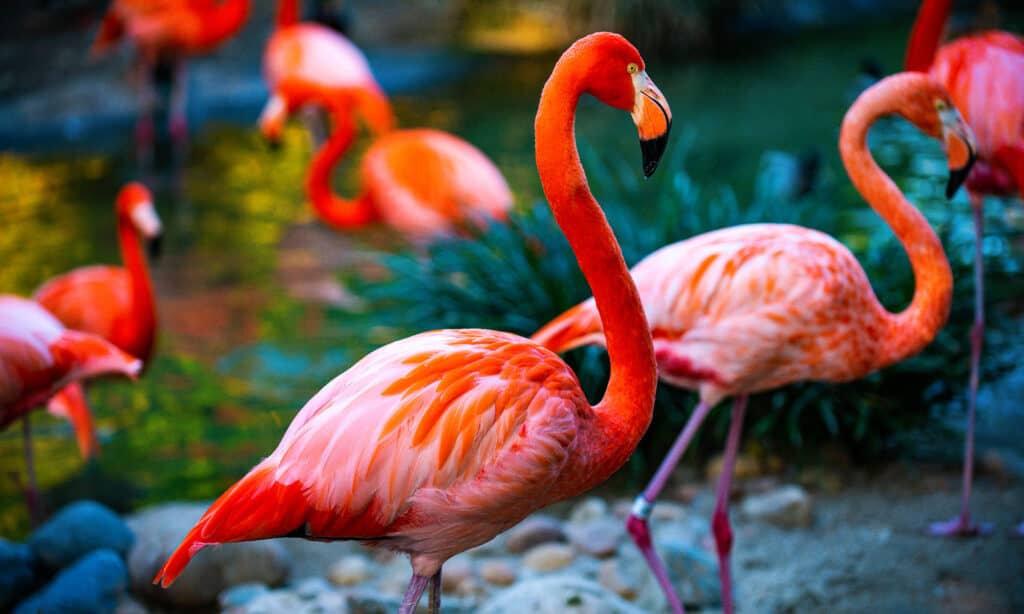
Flamingos make their homes in tropical and subtropical climates.
©Volodymyr TVERDOKHLIB/Shutterstock.com
If you’re looking for flamingos in North America, your best bet will be a zoo or bird sanctuary. Flamingos live in tropical and subtropical climates, such as the Caribbean Islands, along the northern coast of South America, the Galapagos Islands, the Turks and Caicos Islands, the Bahamas, and India. Their habitats include saline lagoons, shallow lakes, tidal flats, and mangrove swamps.
Flamingos used to inhabit southern Florida. Flocks of flamingos once migrated from the Bahamas to Florida Bay. However, migrating flamingos have not been spotted in Florida since the early 1900s. A loose flamingo found in North America is likely to be a zoo escapee.
You won’t find wild flocks of flamingos in Florida because the flamingo’s habitat was wiped out due to habitat destruction and the over-collecting of eggs and feathers. However, today you can find flamingos in Florida kept safely in captive colonies in the southern part of the state. The Hialeah Park Race Track, a National Audubon Sanctuary, opened in the 1930s and still operates today.
What Color Are Flamingos When They Are Born?

It may surprise you to learn that one of the flamingo colors is grey.
©Savazzi Photo/Shutterstock.com
If you saw a flamingo chick, you might entirely mistake it for a different species. Flamingos are not born with their iconic colors. Instead, they have gray or white soft downy feathers. Their fluffy plumage helps keep them warm.
Both parents care for the hatchlings. The babies leave their nests around five days old to live in small groups of other hatchlings where they are still fed by their parents. Their parents recognize them by their voices. After a few weeks, the small groups form into larger groups (crèches) and begin to forage for their own food.
What Age Does a Flamingo Turn Pink?
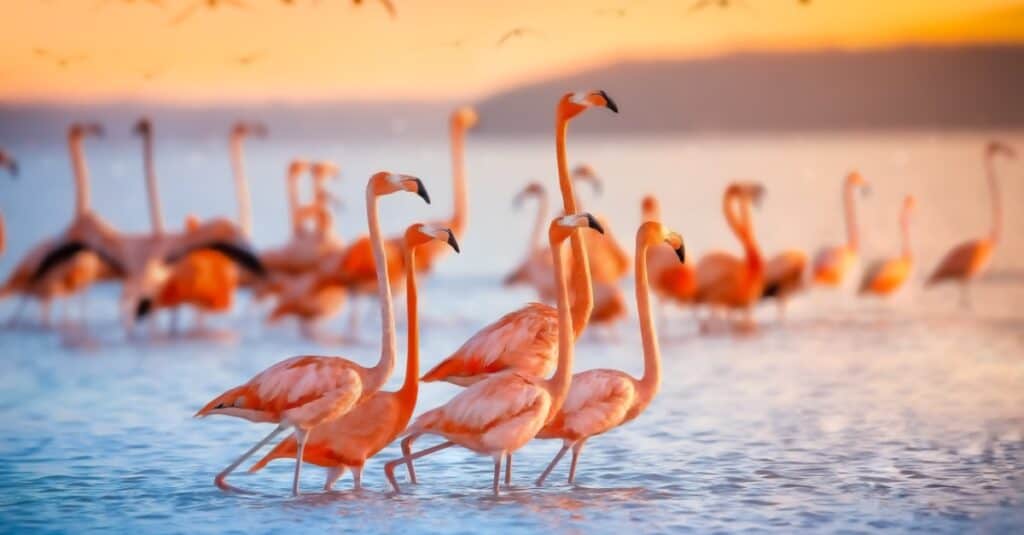
Flamingo feathers don’t appear pink until age two or three.
©iStock.com/Jonathan Ross
Flamingos are considered fledglings around 9 to 13 weeks of age. Fledglings are young birds that have grown flight feathers and are becoming more independent. Flamingos can reach their adult size around one to two years of age. But their famously pink feathers don’t show up until around two to three years.
Why Are Flamingos Pink?
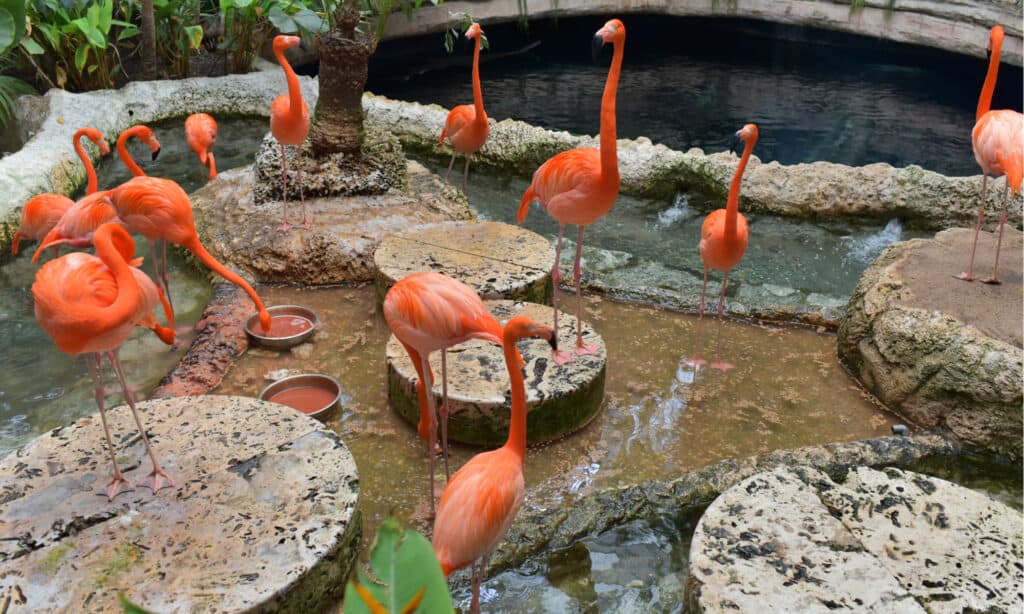
The diet of a flamingo causes their pink feathers.
©Si Vo/Shutterstock.com
Flamingos aren’t born pink, rather, they get their coloring from the food they eat. Flamingos are omnivorous (they eat both plants and animals.) Their diet consists of brine shrimp and blue-green algae.
The carotenoids in the food turn the bird’s feathers into bright colors. The large supply of beta carotene changes the pigment of the bird’s feathers, skin, and egg yolks.
Flamingos Thrive in Toxic “Soda Lakes”
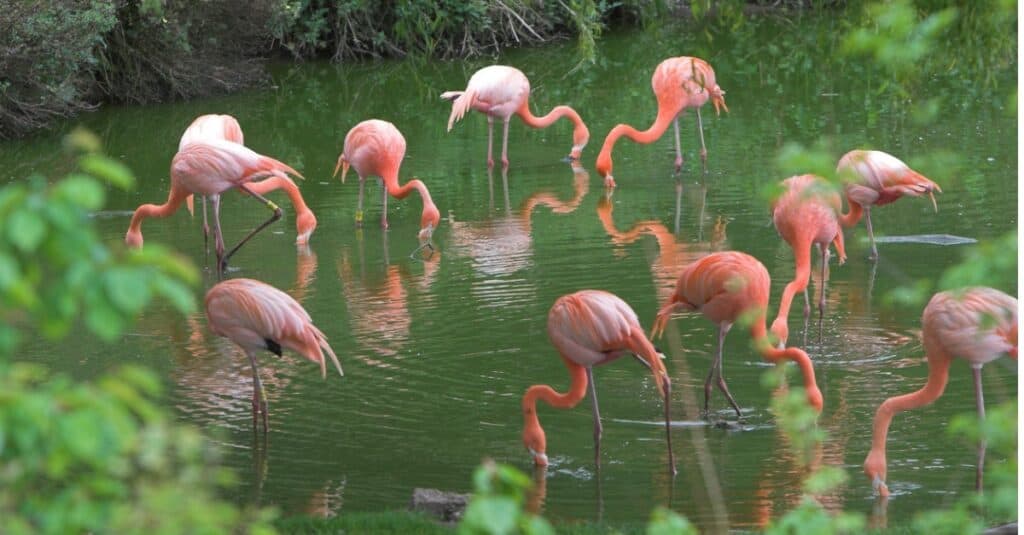
Known as soda lakes, highly alkaline bodies of water help flamingos thrive.
©iStock.com/GTMedia
Fascinatingly, this diet is toxic to other animals. The microscopic blue-green algae (called cyanobacteria) the flamingos eat produce chemicals that can damage an animal’s liver, nervous system, and cells. But the flamingo eats large amounts of blue-green algae without any ill effects.
Consequently, flamingos can live in highly alkaline environments, in bodies of water called “soda lakes,” that are toxic to many other animals. Soda Lakes are so high in PH levels it could burn the skin and bones of humans.
But how can flamingos eat this toxic food and live in alkaline environments without getting sick? Flamingos evolved to have a specialized metabolism to process the chemicals in their liver. Their bodies break down the harmful chemicals into nutrients and into the pigment that gives them their colorful hues.
The birds take a few years to break down the chemicals and grow their spectacular pink feathers.
The Brighter the Flamingo, the More Popular the Bird
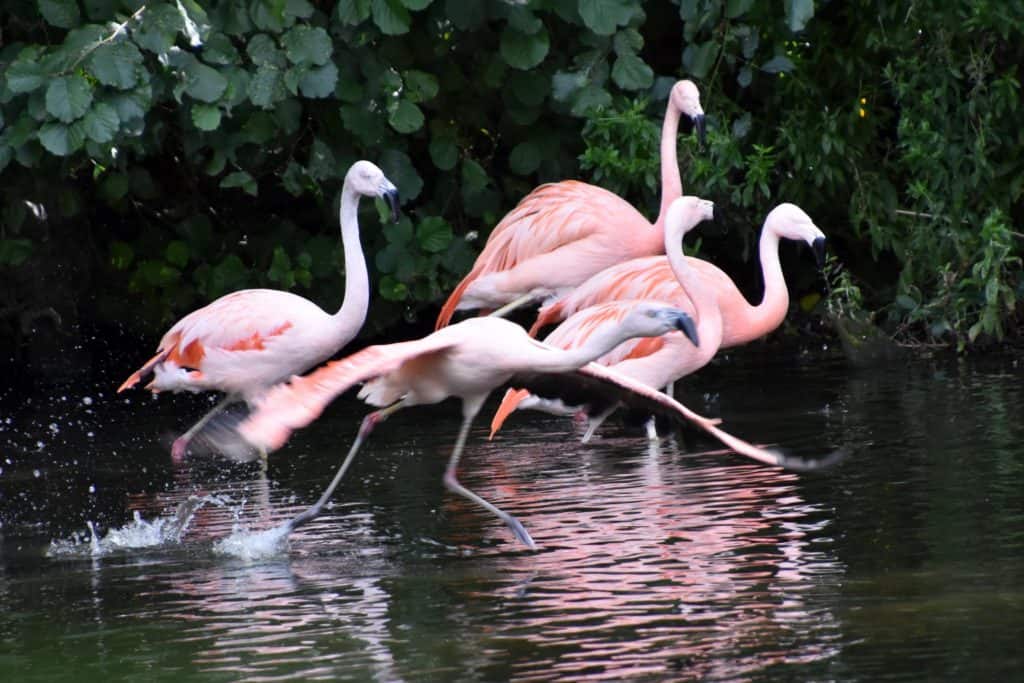
The bright flamingo feathers help attract mates.
©Millie Bond – Copyright A-Z Animals
Flamingos’ bright colors are an attraction to other birds when mating. The brighter the feathers, the more likely the flamingo is to attract a mate. Researchers believe this may be because younger flamingoes that are not ready yet to mate haven’t developed their colorful plumage yet. But once the birds are older and their feathers are brighter, they signal to other birds that they are ready for a mate.
Fun Fact: A Group of Flamingos Is Called a Flamboyance
Fittingly named, a gathering of flamingos is called a “flamboyance”.
The photo featured at the top of this post is © Volodymyr TVERDOKHLIB/Shutterstock.com
Thank you for reading! Have some feedback for us? Contact the AZ Animals editorial team.






